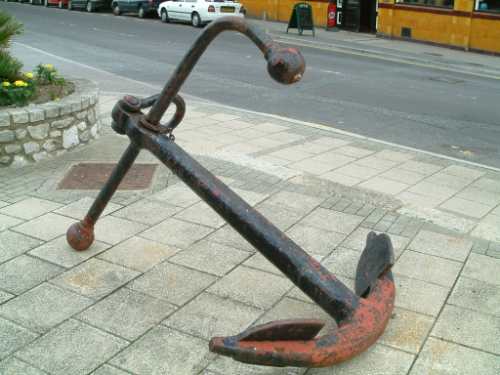 Carl was cook on the schooner HARVEY GAMMAGE. He was about 30 years old, big and strong, and tended to barge into his tasks as if he were leaping into a barroom brawl. He had a few fingers missing from one hand from a sudden encounter with a table saw in one of his many previous jobs. He wasn’t much of a cook, probably because he really wanted to be a sailor, and was always out on deck helping to handle the sails, which he didn’t know anything about, while the pots boiled over in the galley. He was a good-hearted, strong and hard working man, but we all had a hard time with him as a shipmate.
Carl was cook on the schooner HARVEY GAMMAGE. He was about 30 years old, big and strong, and tended to barge into his tasks as if he were leaping into a barroom brawl. He had a few fingers missing from one hand from a sudden encounter with a table saw in one of his many previous jobs. He wasn’t much of a cook, probably because he really wanted to be a sailor, and was always out on deck helping to handle the sails, which he didn’t know anything about, while the pots boiled over in the galley. He was a good-hearted, strong and hard working man, but we all had a hard time with him as a shipmate.The HARVEY GAMMAGE, like most schooners, is built for sailing and is very hard to manage under engine power. It’s easily blown uncontrollably sideways by the wind in close quarters. Our berth in Gloucester, Massachusetts, which we used while we did whale watching trips out to Stellwagen Bank off Boston, was hard to get into under good conditions, and there was often a fishing boat there too, which made getting into our spot like threading a needle with a runaway log.
Most schooners carry their anchors lashed to the rail forward, that is to say, pulled up over the edge of the ship and tied down securely, but in a way that allows it to be lowered over the side when needed. The anchors are the old-fashioned type you think of when you think of the tattoo on the old salt’s arm, two big points on a curved bottom with a cross-piece at the top. When the anchor is lashed to the rail one of those big points sticks out over the edge of the ship.
One evening, with a cross-wind blowing us sideways, Capt. John began threading us into the eye of that needle. He had done this well many times before, but this evening there was a fishing boat even more in the way than usual. A big gust of wind began to carry us sideways. To regain control John had to gun the engine for a moment to swing the boat the other way. We gained a bit of speed, not enough to turn against the wind but enough to carry us forward toward the fishing boat. It was clear that our anchor, sticking over the side, was going to hit the side of the fishing boat, probably stoving in her bulwarks and causing considerable damage. At this point, there was no way to prevent the collision.

When we were tied up Capt. John came up to congratulate Carl, giving me a sideways look for trying to stop him. “Best $50 bucks I ever spent”, he said of the fender. I still felt Carl had taken a foolish risk. The fishing boat could be repaired and covered by insurance, but Carl might have lost more than a few more fingers over the anchor. Still, the fact that he was willing to take that risk for the ship showed an impressive level of engagement in his work.
But Carl’s engagement was mixed. He was able to offer the heroic action that saved the day for Capt. John and the HARVEY GAMMAGE, but it was a sort of engagement that in the long run did not serve him, or the ship, well. He was constantly barging in. He barged into the job as cook in the first place, without the skill or experience he needed. Then he barged in with the crew trying to handle the sails, making the job harder for the rest of us. He had to be active in everything. He seemed to be barging through his life from one thing to another, mistaking activity for intention.
Having Carl there for the one crisis where his barging in was just what was needed may have been worth it. That’s why diversity in a crew is a good thing. But on the whole he made life on board difficult. His over-activity undermined his accomplishment, and undermined the accomplishment of the rest of us as well.
We all know people like this, whose allegiance to doing is so great that their endless doing actually gets in their own way. In this sense they out-do themselves. They can’t keep up with their own doing, and they live in a state of constant mis-accomplishment.
Useful engagement is not the same as activity. Useful engagement implies seeing a bigger picture of what’s needed and what’s not needed. We can be highly engaged in our activity, and completely miss that bigger picture, so we have no idea if we’re doing anything useful or not. But we’re doing a lot, and that feels good. To us. It may not feel so good to others, or to the organization.
If a friend sent you this article and you’d like to sign up to receive more, twice-a-month, click here to sign up.
Or if you would like to read Crane’s book, (or for a short read, his mini-books) click here for the free ebook or audiobook downloads.






